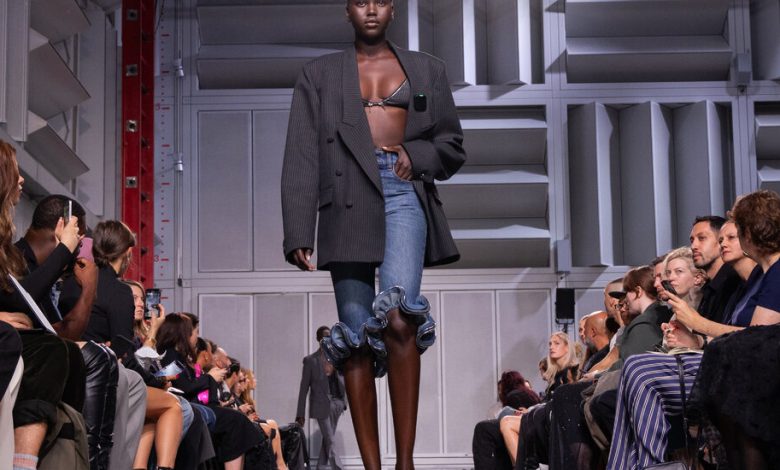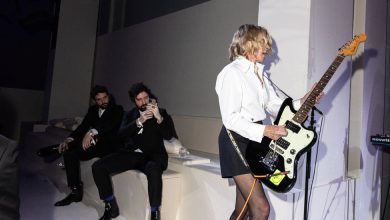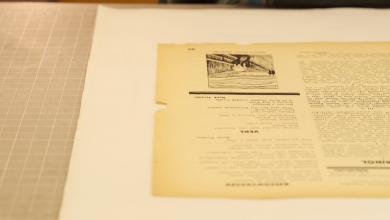Wearables, Redefined

In 2014 Jony Ive, then the chief design officer of Apple, came to Paris Fashion Week with his Big New Product, the Apple Watch, to convince the fashion crowd that wearables were the future of fashion. That turned out to be not exactly true (at least style-wise), but it hasn’t stopped two former Apple designers, Imran Chaudhri and Bethany Bongiorno, from returning nine years later to try again.
This time around, the product is the Ai Pin — a stand-alone smart assistant that attaches to clothing via a magnet and so can be worn pretty much wherever you want it — which made its runway debut on the jackets and pant pockets at Coperni. The brand’s founders and designers, Sébastien Meyer and Arnaud Vaillant, have become known during fashion week for their technology-based stunts: spray-painting fabric on Bella Hadid to make a dress, setting robot dogs loose on the runway.
Compared to those antics, the pin seemed relatively subtle, especially since the models didn’t actually interact with it, so it was impossible to judge except on its aesthetics. Which could be summed up as “employee ID badge chic” (the kind employees never actually want to wear) though without a picture. Or, said one observer, “an Apple watch on a lapel.” Another thought it resembled a glucose monitor for diabetics.
In any case, the pin didn’t add any sort of design element to the clothes — more interesting were the flat speakers by Transparent, incorporated into leather jackets like boobs, a funny, if juvenile, visual joke that set up a theme that included metal triangles, zipper-edge ruffles and elements of performance wear.
They could learn something from Kunihiko Morinaga of Anrealage, who doesn’t just stick technology on clothes, but incorporates it into them (that’s a very big difference). He recently trademarked what he calls his Anvisual photochromic technology, in which clear PVC (polyvinyl chloride) garments are transformed via ultraviolet light into multicolored outfits, like a rainbow being exposed in real time. Or a crocheted patchwork shift and cape, a stained-glass apron dress: piecework from the future.
Granted, it’s unclear how anyone can carry around their own light effects, but Mr. Morinaga’s use of new tech forces a rethinking of old forms and assumptions (What is color? How do we perceive it?) that is useful in the best way. Just as Junya Watanabe’s exploration of three-dimensional geometry via prismatic and tubular forms for his namesake brand was literally transformational.
His work — you couldn’t really call it clothing — looked as if a toy railroad or bunch of blocks had been tossed in the air, and the pieces left to fall into a pile of shapes that were sewn together in neoprene, denim, leather and tweed.
Playing the angles has never looked like so much fun. Even if all of it wasn’t exactly, well, wearable.



